The last few years the emphasis has been given to the exploitation of the analytical merits of Macroscopic XRF (MA-XRF) imaging adding quantitative information to the elemental images generated. This research is carried out through a multi-scale collaboration established with the LANDIS laboratory of INFN-LNS, Catania, Sicily. Field MA-XRF investigations have been recently performed to investigate Mycenean gold provenance and technology and ancient polychromy from: a) the wall-painting fragments from the Palace of Nestor at Pylos, b) the Archaic Pitsa panels (the oldest painted wooden artifacts from antiquity at the National Archaeological Museum – NAM) and c) the famous Cycladic figurines. The research involved close partnerships with analytical scientists and archaeologists from the National Hellenic Research Foundation, the University of Cincinnati, the National Archaeological Museum, the Museum of Cycladic Art, the IESL-FORTH and the University of Peloponnese.
It is also worth to be mentioned that during the last few years several field investigations were also performed using mostly the INPP XRF infrastructure to study unique ancient monuments, artefacts/materials:
- the wall-painting at the frieze of the Royal tomb of Philip II at Aigai in Macedonia
- the bronze statue of the Poseidon of Livadostra
- the Archaic statue of Phrasikleia
- silver decorations on archaic helmets from Olympia
- Mycenean beads from the Griffin Warrior tomb
- The archaic kouros at Kalymnos archaeological museum
Votive finds from various sanctuaries of Arcadia, Greece (9th -7thc. B.C.E.)
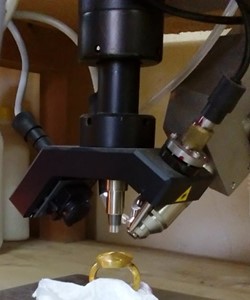
(a)
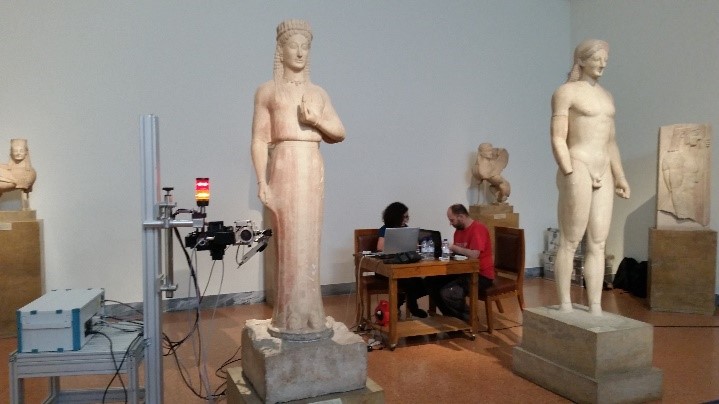
(b)
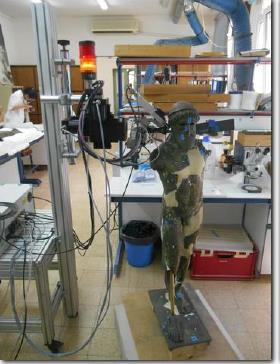
(c)
In-situ micro-XRF measurements performed: (a) At the Archaeological museum of Chora Messinias by analyzing a gold Mycenean signet ring recently excavated (2015) from the Griffin Warrior grave by Dr. Sharon Stocker and Prof. Jack Davis for the University of Cincinnati, (b) Micro-XRF examination of the existent polychromy on Phrasikleia marble statue (inv. Γ 4889) Collaboration with Prof. Bernhard Schmaltz and c) Micro-XRF study of the bronze statue of Poseidon of Livadostra (inv. Χ11761) at the National Archaeological Museum in the framework of MSc thesis of Athanasia Fragkou. Collaboration with the Head of Conservation Department, Dr. G. Moraitou
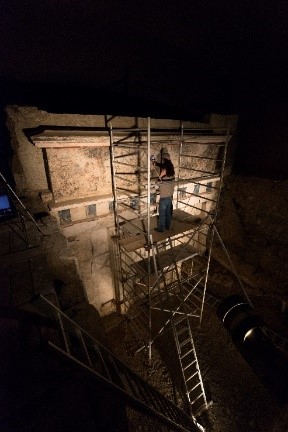
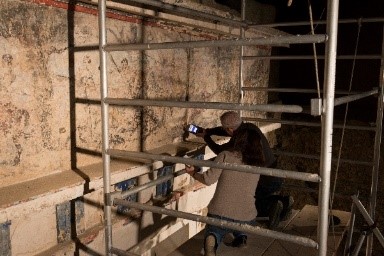
In-situ handheld XRF measurements performed in 2013 at the wall-painting executed on the frieze of the Royal tomb of Philip II, Ancient Aigai, Vergina (Macedonia). The work was carried out in collaboration with Hariclia Brecoulaki, Giovanni Verri and Aggeliki Kotaridi
